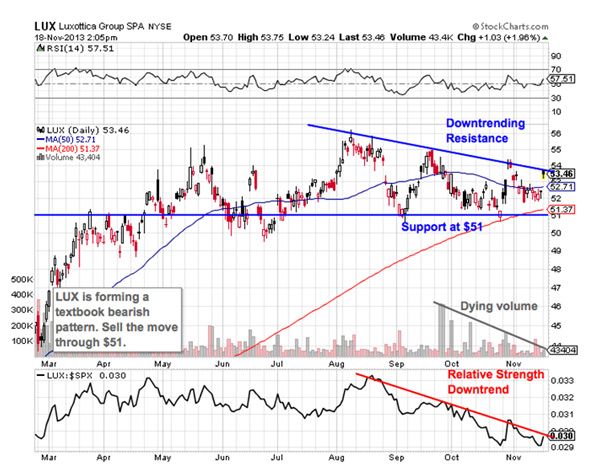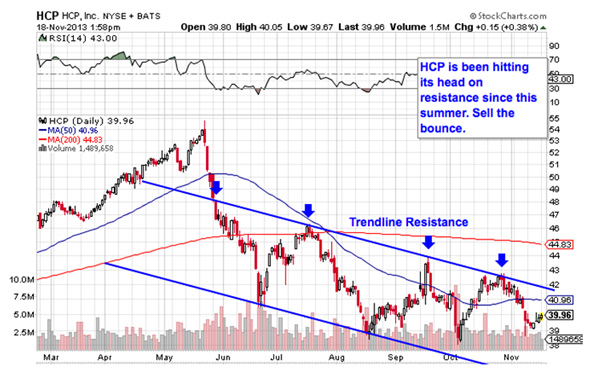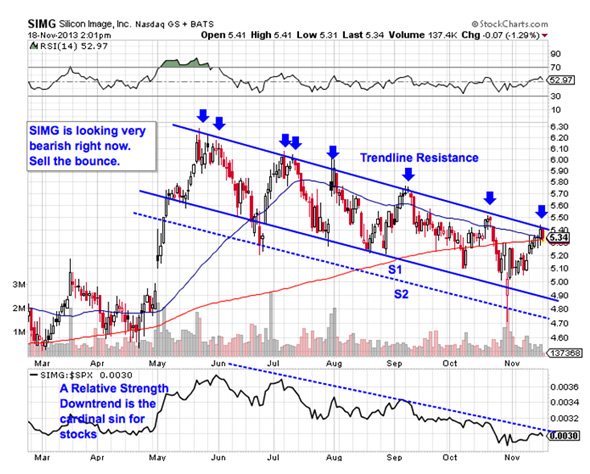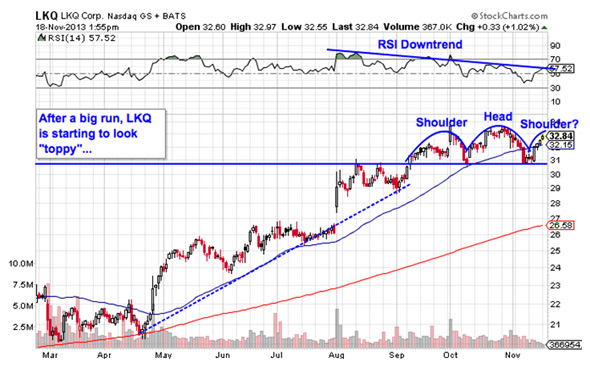It All Starts with Interest Rate Policy
Banks are generally free to determine the interest rate they will pay for deposits and charge for loans, but they must take the competition into account, as well as the market levels for numerous interest rates and Fed policies. The United States Federal Reserve influences interest rates by setting certain rates, stipulating bank reserve requirements, and buying and selling ��isk-free��(a term used to indicate that these are among the safest bonds in existence) U.S. Treasury and agency securities to impact the deposits that banks hold at the Fed. This is referred to as monetary policy and is intended to influence economic activity as well as the health and safety of the overall banking system. Most market-based countries employ a similar type of monetary policy in their economies.
Top 10 Safest Companies To Invest In Right Now: Fluor Corporation(FLR)
Fluor Corporation, through its subsidiaries, provides engineering, procurement, construction, maintenance, and project management services worldwide. Its Oil & Gas segment offers design, engineering, procurement, construction, and project management services to upstream oil and gas production, downstream refining, chemicals, and petrochemicals industries. This segment also provides consulting services comprising feasibility studies, process assessment, and project finance structuring and studies. The company?s Industrial & Infrastructure segment offers design, engineering, procurement, and construction services to the transportation, wind power, mining and metals, life sciences, manufacturing, commercial and institutional, telecommunications, microelectronics, and healthcare sectors. Its Government segment provides engineering, construction, logistics support, contingency response, management, and operations services to the United States government focusing on the Departme nt of Energy, the Department of Homeland Security, and the Department of Defense. The company?s Global Services segment offers operations and maintenance, small capital project engineering and execution, site equipment and tool services, industrial fleet services, plant turnaround services, temporary staffing services, and supply chain solutions. Its Power segment provides engineering, procurement, construction, program management, start-up and commissioning, and operations and maintenance services to the gas fueled, solid fueled, plant betterment, renewables, nuclear, and power services markets. The company also offers unionized management and construction services in the United States and Canada. Fluor Corporation was founded in 1912 and is headquartered in Irving, Texas.
Advisors' Opinion:- [By Louis Navellier]
If we look at the sector using Portfolio Grader, we see that many of the big names in the group like Flour (FLR), Granite Construction (GVA) and KBR incorporated (KBR) are rated ��ell.��The anticipated spending for both government and private industry simply hasn�� materialized, and the companies are not seeing revenue or profit growth.
- [By CRWE]
Fluor Corporation�� (NYSE:FLR) Chairman and Chief Executive Officer, David Seaton, and Chief Financial Officer, Biggs Porter, will give a presentation to investors at the Credit Suisse 2012 Engineering & Construction Conference in New York on Thursday, June 7 at 9:00 a.m. Eastern Daylight Time.
- [By The Energy Report]
JH: One of the areas where the U.S. for decades has been the leading technological power is in small nuclear reactors. We've used them on our aircraft carriers and on our nuclear submarines safely and efficiently. The U.S. has an advantage in understanding small modular nuclear reactors. One of the companies that we have followed for a long time that's working on that is Babcock & Wilcox Co. (BWC). There's also Fluor Corp. (FLR), which is working on small modular nuclear reactors. President Obama and the Department of Energy are funding research on the implementation of small modular nuclear reactors.
Top 10 Safest Companies To Invest In Right Now: Under Armour Inc.(UA)
Under Armour, Inc. develops, markets, and distributes performance apparel, footwear, and accessories for men, women, and youth primarily in the United States, Canada, and internationally. It offers products made from moisture-wicking synthetic fabrics designed to regulate body temperature and enhance performance regardless of weather conditions. The company provides its products in three fit types: compression (tight fitting), fitted (athletic cut), and loose (relaxed) extending across the sporting goods, outdoor, and active lifestyle markets. Its footwear offerings comprise football, baseball, lacrosse, softball, and soccer cleats; slides; performance training footwear; and running footwear. The company also provides baseball batting, football, golf, and running gloves, as well as licenses bags, socks, headwear, custom-molded mouth guards, and eyewear that are designed to be used and worn before, during, and after competition. Under Armour sells its products through retai l stores, as well as directly to consumers through its own retail outlets and specialty stores, Website, and catalogs. The company was founded in 1996 and is headquartered in Baltimore, Maryland.
Advisors' Opinion:- [By Monica Gerson]
Under Armour (NYSE: UA) is expected to report its Q3 earnings at $0.66 per share on revenue of $710.18 million.
Reliance Steel & Aluminum Co (NYSE: RS) is estimated to report its Q3 earnings at $1.20 per share on revenue of $2.54 billion.
- [By Steve Symington]
If you ever wondered how long�Under Armour� (NYSE: UA ) would be able to maintain its current torrid pace of growth, the company's founding CEO Kevin Plank wants you to know they're only just getting started.
- [By Steve Symington]
5. Under Armour (NYSE: UA )
Lastly, I'm offering Under Armour as my final "better than Berkshire" stock. And yes, I'm aware comparing this tiny $6 billion performance apparel company to the diversified behemoth that is Berkshire may seem odd.
10 Best Bank Stocks To Watch Right Now: Petroleo Brasileiro S.A.- Petrobras(PBR)
Petroleo Brasileiro S.A. primarily engages in oil and natural gas exploration and production, refining, trade, and transportation businesses. The company?s Exploration and Production segment involves in the exploration, production, development, and production of oil, liquefied natural gas (LNG), and natural gas in Brazil. This segment supplies its products to the refineries in Brazil, as well as sells surplus petroleum and byproducts in domestic and foreign markets. Its Supply segment engages in the refining, logistics, transportation, and trade of oil and oil products; export of ethanol; and extraction and processing of schist, as well as holds interests in companies of the petrochemical sector in Brazil. The Gas and Energy segment involves in the transportation and trade of natural gas produced in or imported into Brazil; transportation and trade of LNG; and generation and trade of electric power. In addition, the segment has interests in natural gas transportation and d istribution companies; and thermoelectric power stations in Brazil, as well engages in fertilizer business. The Distribution segment distributes oil products, ethanol, and compressed natural gas in Brazil. The International segment involves in the exploration and production of oil and gas, as well as in supplying, gas and energy, and distribution operations in the Americas, Africa, Europe, and Asia. Further, the company involves in biofuel production business. Petroleo Brasileiro was founded in 1953 and is based in Rio de Janeiro, Brazil.
Advisors' Opinion:- [By David Smith]
Also, as with its competitors, Halliburton registered meaningful achievements during the quarter, including the above-mentioned new contracts with Petrobras (NYSE: PBR ) in Brazil. Those four-year contracts can be expanded for a second equal term, and potentially could result in more than $2.0 billion in revenue for Halliburton. In addition, the company will provide multilateral technology for a pair of mature Statoil (NYSE: STO ) fields in Norway. That work is based upon a three-year contract, with a pair of possible two-year extensions.
- [By Robert Rapier]
The biggest thing working against Statoil is that two-thirds of the shares are owned by the Norwegian government. This differs from Eni (~30 percent government-owned) and Total (less than 10 percent government-owned). Statoil’s ownership situation is similar to that of Petrobras (NYSE: PBR). And Petrobras shareholders have learned the hard way what can happen when the government is forced to choose between voters who are unhappy with high fuel prices and the interests of the company. Petrobras was forced to sell fuel at a loss, which was great for Brazil’s citizens but not so good for Petrobras shareholders.
Top 10 Safest Companies To Invest In Right Now: Goldman Sachs Group Inc.(The)
The Goldman Sachs Group, Inc., together with its subsidiaries, provides investment banking, securities, and investment management services to corporations, financial institutions, governments, and high-net-worth individuals worldwide. Its Investment Banking segment offers financial advisory, including advisory assignments with respect to mergers and acquisitions, divestitures, corporate defense, risk management, restructurings, and spin-offs; and underwriting securities, loans and other financial instruments, and derivative transactions. The company?s Institutional Client Services segment provides client execution activities, such as fixed income, currency, and commodities client execution related to making markets in interest rate products, credit products, mortgages, currencies, and commodities; and equities related to making markets in equity products, as well as commissions and fees from executing and clearing institutional client transactions on stock, options, and fu tures exchanges. This segment also engages in the securities services business providing financing, securities lending, and other prime brokerage services to institutional clients, including hedge funds, mutual funds, pension funds, and foundations. Its Investing and Lending segment invests in debt securities, loans, public and private equity securities, real estate, consolidated investment entities, and power generation facilities. This segment also involves in the origination of loans to provide financing to clients. The company?s Investment Management segment provides investment management services and investment products to institutional and individual clients. This segment also offers wealth advisory services, including portfolio management and financial counseling, and brokerage and other transaction services to high-net-worth individuals and families. In addition, it provides global investment research services. The company was founded in 1869 and is headquartered in New York, New York.






 Bloomberg News
Bloomberg News  Bloomberg
Bloomberg  In a bid to promote electric car use among its own workers, another U.S. auto giant is making it easier for employees to recharge their vehicles while at work.
In a bid to promote electric car use among its own workers, another U.S. auto giant is making it easier for employees to recharge their vehicles while at work.
 [ Enlarge Image ]
[ Enlarge Image ] [ Enlarge Image ]Visiting a Nigerian cement companyOne executive at the firm told us that Nigeria was often underestimated. The biggest challenge from his perspective? A lack of effective political will and, in particular, little willingness to promote the domestic agricultural sector, since Nigeria is importing some US$1.2 billion worth of food products yearly. However, he also believed the government was generally constructive and had a good economic advisory team.
[ Enlarge Image ]Visiting a Nigerian cement companyOne executive at the firm told us that Nigeria was often underestimated. The biggest challenge from his perspective? A lack of effective political will and, in particular, little willingness to promote the domestic agricultural sector, since Nigeria is importing some US$1.2 billion worth of food products yearly. However, he also believed the government was generally constructive and had a good economic advisory team.


